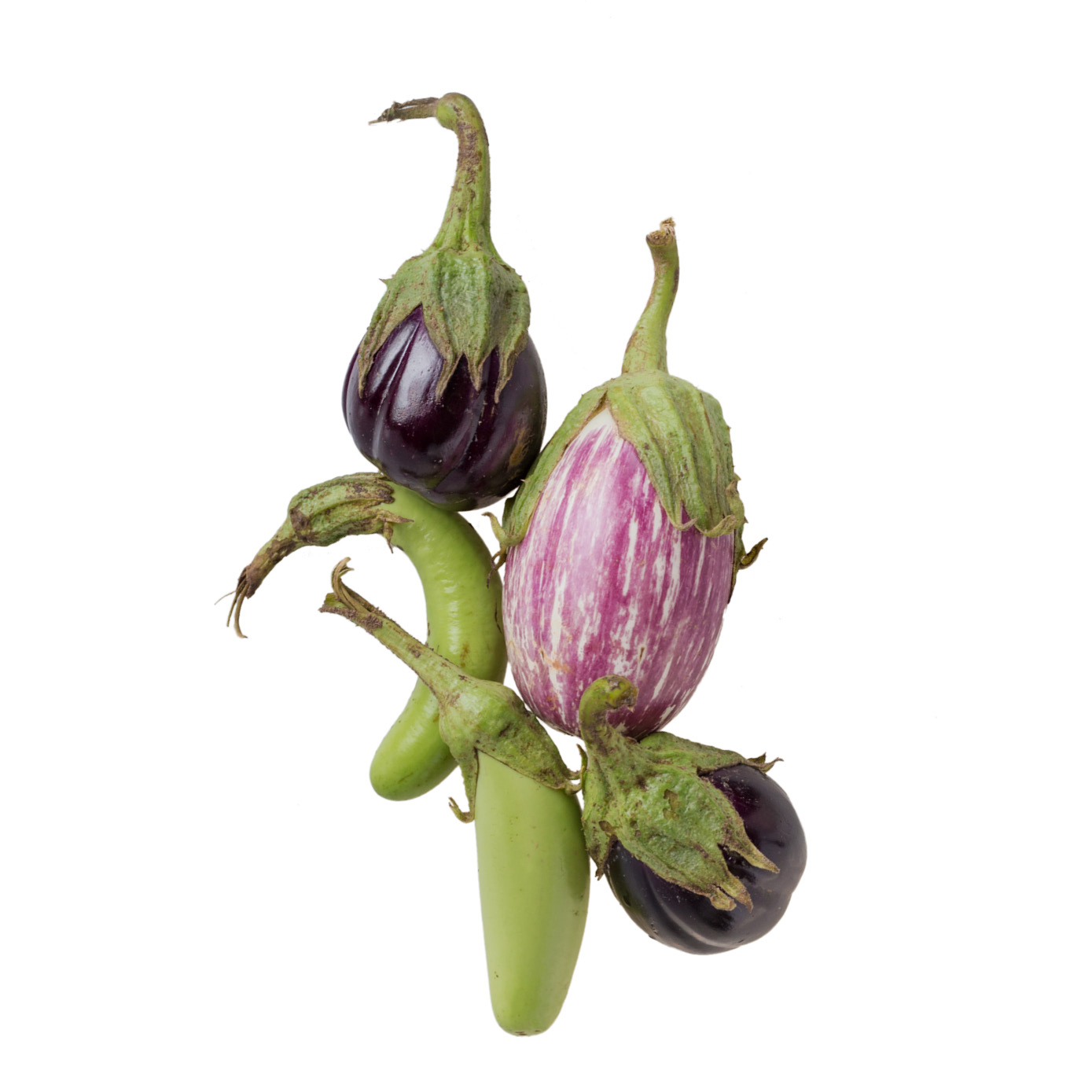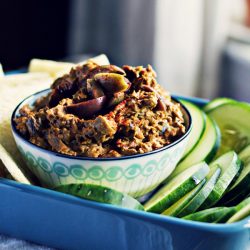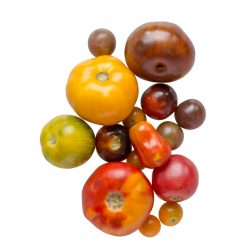Eggplant
Solanum melongena
Though most common varieties are purple in color with an elongated shape, the term “eggplant” was first used in the eighteenth century to describe a small white variety with the appearance of a chicken’s egg.
Seasonality
| J | F | M | A | M | J | J | A | S | O | N | D |
| • | • | • | • | • |
Description
Eggplant, a member of the nightshade family, comes in a variety of shapes, sizes and hues. The flesh of raw eggplant is spongy, bitter and astringent. Once cooked, it develops a mellow, more complex flavor. The skin, flesh, and seeds of the eggplant are all edible, though it is recommended to not eat raw eggplant.
Storage tips
Eggplant does best uncovered and left in a cool spot in your kitchen for up to 3 days. Keep it away from ethylene producing fruits like bananas and apples to extend its shelf life. If your kitchen tends to be hot and humid, keep it in the fridge with enough space for air to circulate around it.
Culinary tips
- Larger varieties have the potential to be more bitter. In order to draw out the bitterness, cut the eggplant in half, salt it, and let it sit for 30 minutes before rinsing it and using it in your recipe.
- Eggplant’s spongey flesh absorbs flavors and fats well.
- Eggplant is versatile and can be roasted, sauteed, steamed, or fried.
- Pairs well with peppers (sweet and hot), tomatoes, onions, zucchini, basil, cilantro, garlic, and ginger.








